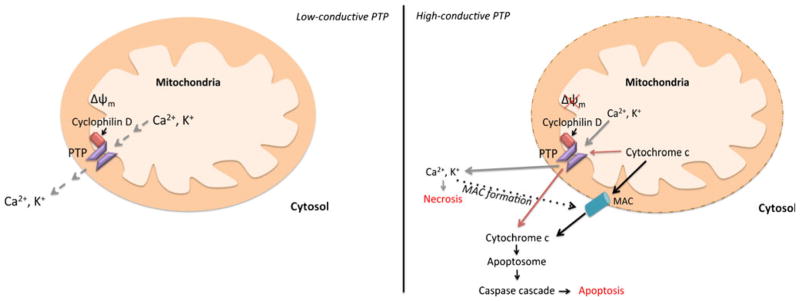Fig. 4.

PTP opening is controlled by the rate of mitochondrial Ca2+ influx. Rapid or transient increases in mitochondrial Ca2+ influx results in low-conductive PTP opening permeable to small ions and controls transient Ca2+ release. Prolonged Ca2+ signals or mitochondrial Ca2+ overload causes high-conductive PTP opening, which increases cyctosolic Ca2+. The highly-conductive PTP was observed to directly facilitate necrosis (gray lines) and apoptosis (red lines). There is additional evidence that the PTP works in conjunction with MAC during apoptosis initiation (black lines). High-conductive opening of the PTP increases cytosolic Ca2+ concentration, which results in activation of pro-apoptotic proteins, inhibition of anti-apoptotic proteins, and MAC assembly. MAC then functions to permeabilize the OMM and release cyto-chrome c, which leads to apoptosis
